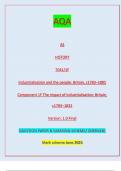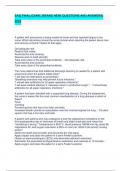Exam (elaborations)
Exam (elaborations) NST1501 Assignment 3 (COMPLETE ANSWERS) 2024 • Course • Natural Science and Technology for Classroom I (NST1501) • Institution • University Of South Africa (Unisa) • Book • Study and Master Natural Sciences and Technology Grade 6 CAPS
- Course
- NST1501
- Institution
- University Of South Africa
Exam (elaborations) NST1501 Assignment 3 (COMPLETE ANSWERS) 2024 • Course • Natural Science and Technology for Classroom I (NST1501) • Institution • University Of South Africa (Unisa) • Book • Study and Master Natural Sciences and Technology Grade 6 CAPS Teacher's Guide NST1501 ...
[Show more]










